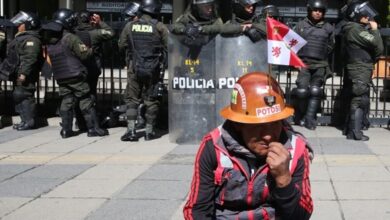FED: What Does the Rise in Interest Rates Represent for the Latam Economy?
The United States Federal Reserve (FED) discussed raising the interest rate by 25 basis points or leaving this practice, which has caused several banks to go bankrupt, migrating towards new proposals that allow inflation to be controlled globally.

Photo: Unsplash
LatinAmerican Post | David García Pedraza
Escucha este artículo
Leer en español: FED: ¿Qué representa el alza de las tasas de interés para la economía de Latam?
May has started with a new move to mitigate the ravages of inflation and the banking crisis that is shaking the financial sector in the United States and the world. With the implementation of raising 25 basis points to interest rates, these were fixed between 5% and 5.25%. This act constitutes the tenth rise that has been presented in the last year, which creates some instability in the stock market.
The pressure of the banks not to declare bankruptcy, added to the inflation that increasingly devalues various currencies worldwide, has put the Federal Reserve of the United States in trouble. The Fed aspires, in the long term, to achieve the maximum employment in the nation and to stabilize inflation at a rate of 2%, which is currently at 5%.
However, these goals are far from being met due to the constant variability of financial behavior in the world. These economic ravages have been in sight since the beginning of the post-pandemic and, even so, they have not been able to put up a solid front. The biggest fear is the economic recession and the bankruptcy of more financial institutions, thus causing an environment of mistrust greater than the current one.
The Reality of the Capitalist Giant
The case that marks the painful banking situation in the United States is the bankruptcy of Silicon Valley Bank, a promising bank for the American population. Despite the fact that the FED recognized that the supervision carried out on this entity was not the best and that it was, and continues to be, the one in charge of rescuing this bank's clients, this heavy loss affected the tense economic stability that Washington was managing.
Another bank that recently declared bankruptcy was First Republic Bank, an entity that could not carry out an optimal rescue plan and which lost more than one hundred thousand dollars between January and March 2023, which caused a collapse in its shares. This bank will be acquired by J.P. Morgan, which will assume a large part of the assets and all customer deposits, including uninsured ones.
This list is joined by Signature Bank, dedicated to cryptocurrencies. Thus, there are three financial entities that have declared bankruptcy, a situation that has not been seen since 2008 with the crisis caused by the housing bubble.
At present, the Federal Reserve has announced that it will offer financing programs in order to grant loans to banking entities in times of crisis. He also announced that customers who are in bankrupt banks will not have monetary losses, since their money will be returned gradually. Experts agree that the US economy is stable and attribute this wobble to a lack of confidence on the part of customers.
The Situation Below the Rio Grande
Latin America was one of the first regions where interest rates were raised, to spare the havoc that inflation would bring after the strong phase of the pandemic. The International Monetary Fund has stated that the region needs these rates to continue rising and last until 2024 to control the inflationary phenomenon.
Despite the fact that the same organization predicts that during 2023 Latin America will achieve economic growth of 1.6% and by 2024 of 2.2%, the rise in rates is a subject highly criticized by the governments of Brazil and Colombia, mainly.
However, thanks to the fall in food prices in Brazil, inflation in the Latin American giant stood at 4.65%. Lula's government considers that the pressures to continue increasing interest rates are very high, in addition to being far from the goal of 3.65% that was set for this year.
Another nation whose inflation is trending downward is Mexico, which marks a surprising 6.85%, the lowest in a year and a half. Agricultural and energy products are the ones that fell the most. Two of the largest nations in Latin America show a slight recovery, even so it is not enough for their governments or their people, who enlist with their respective treasury portfolios to readjust their interest rates in order not to regress in their slow compensation in the stock market.
It may interest you: Dollarization in Argentina: What are the Advantages and Disadvantages of this Idea by Javier Milei?
A Slow Recovery Effect Boosts Investor Confidence
With the declaration of the president of the Federal Reserve, Jerome Powell, saying that the end is closer than the beginning in this cycle of constant increases, thanks to the rises in interest rates, it is expected that stock confidence will return in clients of the banking sector.
In addition to this attempt to build loyalty with the banks, the guarantees that the FED has given with the response of returns of capital to the clients of the banking entities that have fallen into bankruptcy, in addition to the announcements of financial aid to these companies for loan medium.
However, the world is still aware of every stock market movement and economic decision of the United States, since the stability of the dollar, being considered the universal currency, affects the world economy. It already depends on the actions of the governments on how to deal with the particular situation.
The Federal Reserve will not think twice about raising interest rates again if it deems it necessary. This information does not go down well with public opinion, especially among the working class, since this materializes in the rise in prices from food and gasoline to the acquisition of credits or bank loans. Perhaps this is an opportunity to save or to take the step of investing in stable projects that allow a slight, but sure, individual gain.




